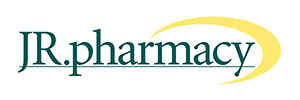With the top marginal rate of individual tax starting at $180,000 of income you have to ask whether structuring your pharmacy into a company or trust (depending on which State the pharmacy operates in) it still worth it?
While income tax is one consideration, there are several other items to consider such as:
- Simplifying operating structures;
- Maximising superannuation contributions; and
- Access to the Small Business Capital Gains Tax concessions – now and in the future.
Simplifying the structures
When the Tax Office last reviewed the use of service entities, the result was a significantly reduced level of income that could be generated by these entities. In fact the Tax Office determined that about 30% of the total net income of both the main business and the service entity could be made in the service entity.
Therefore, if the pharmacy and service entity had a consolidated net profit of $250,000, only $75,000 can be made by the service entity. Depending on your circumstances, this may be significantly less than the service entity previously made and therefore your affairs including tax may have become difficult to manage.
Depending on the relevant State Pharmacy Acts, restructuring into a company or trust can allow the tax on the net profit of the pharmacy to be managed around the 30% rate.
Just as importantly, the removal of the service structure can significantly reduce compliance costs of preparing and lodging multiple Business Activity Statements, as well as the annual reporting requirements of the service structure.
Maximising Superannuation Contributions
With the recent announcement that the Federal Government is halving the amount you can contribute to superannuation it has never been more important to operate your pharmacy in the most appropriate structure to maximise superannuation contributions where possible.
The reduction in contribution levels means that we all need to commence some level of contributions earlier rather than later.
The important point is that the structure needs to be flexible enough to allow contributions for non-working spouses or family members as well as the main proprietor where appropriate.
Not maximising superannuation opportunities could leave you short in retirement.
Access to the Small Business Capital Gains Tax Concessions
One of the key criteria to accessing the concessions is that the net capital gains tax assets of the person selling the pharmacy must be less than $6 million.
This asset test is something that needs to be constantly monitored because it is influenced not only by increasing asset values (incl. the pharmacy), but also debt reduction. In other words, you may be able to access the concessions this year but what about the future?
Depending on your personal circumstances, it may be possible to do one or more of the following:
- Restructure and have the new structure borrow to buy the pharmacy;
- For those of you fortunate enough to have more than one pharmacist in the family ensure that you minimise exposure to grouping under these provisions via appropriate structures;
- Increase non-business assets and maximise wealth outside of the pharmacies in the non-working spouse’s name/control; and
- Maximise superannuation where appropriate (superannuation is excluded from the test altogether).
While structuring and restructuring has generally been focused around annual income taxes, there are many other issues that need consideration. No two circumstances are the same and some pre-planning could save you in the future.
Article by Norman Thurecht – Partner JR Pharmacy Services




